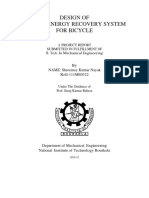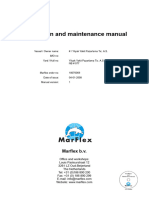0% found this document useful (0 votes)
28 views15 pagesModule 5
The document explains the relationship between Artificial Intelligence (AI) and Natural Intelligence (NI), emphasizing that AI is a tool that enhances human decision-making but cannot replace it. It outlines the importance of human involvement in AI processes to ensure ethical and accurate outcomes, as AI lacks common sense and contextual understanding. Additionally, it discusses the challenges AI faces, such as biases and the need for human oversight, particularly in complex and changing environments.
Uploaded by
layappa44lkCopyright
© © All Rights Reserved
We take content rights seriously. If you suspect this is your content, claim it here.
Available Formats
Download as DOCX, PDF, TXT or read online on Scribd
0% found this document useful (0 votes)
28 views15 pagesModule 5
The document explains the relationship between Artificial Intelligence (AI) and Natural Intelligence (NI), emphasizing that AI is a tool that enhances human decision-making but cannot replace it. It outlines the importance of human involvement in AI processes to ensure ethical and accurate outcomes, as AI lacks common sense and contextual understanding. Additionally, it discusses the challenges AI faces, such as biases and the need for human oversight, particularly in complex and changing environments.
Uploaded by
layappa44lkCopyright
© © All Rights Reserved
We take content rights seriously. If you suspect this is your content, claim it here.
Available Formats
Download as DOCX, PDF, TXT or read online on Scribd
/ 15





























































































